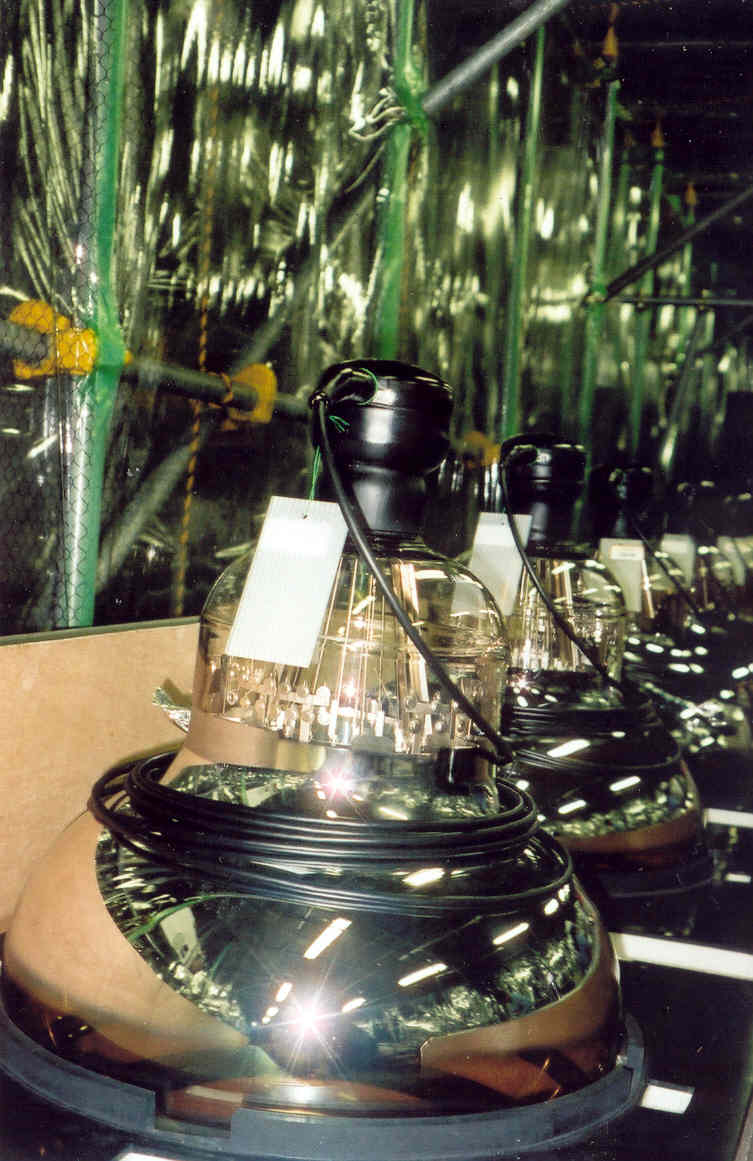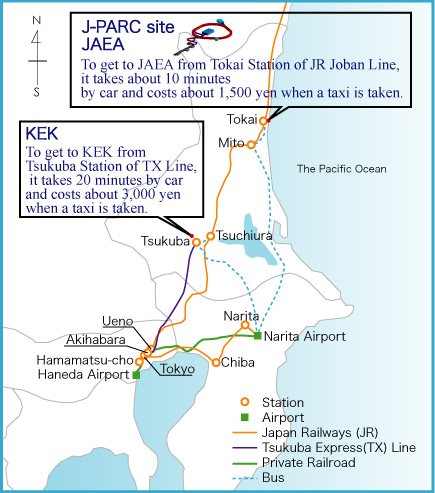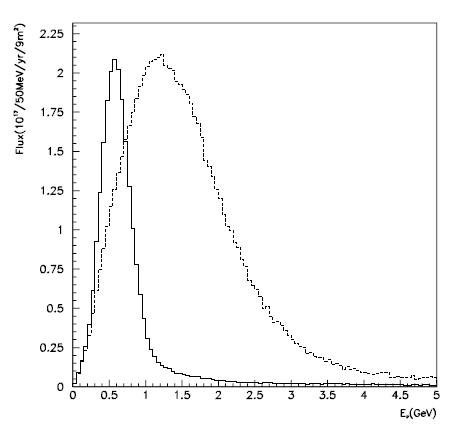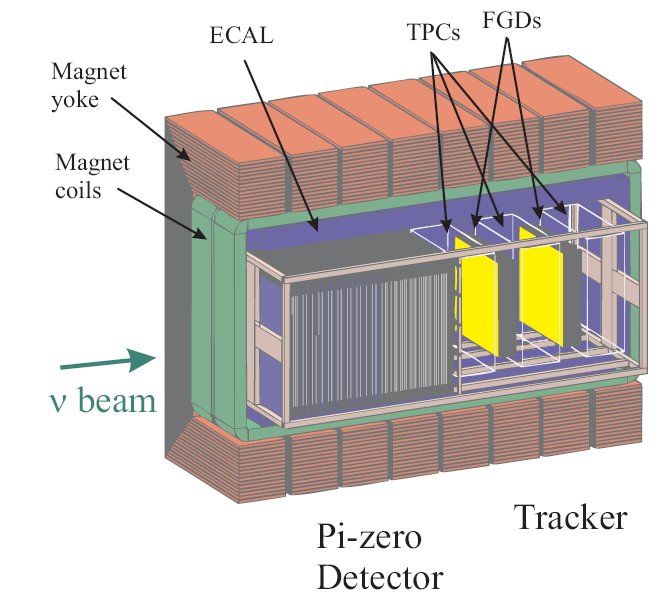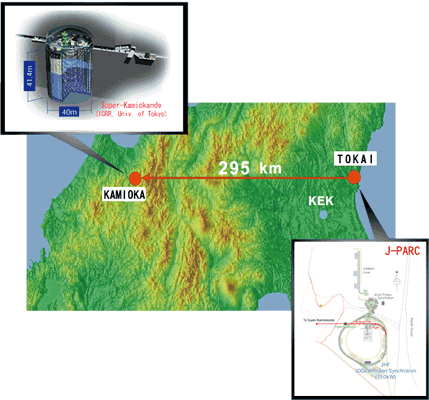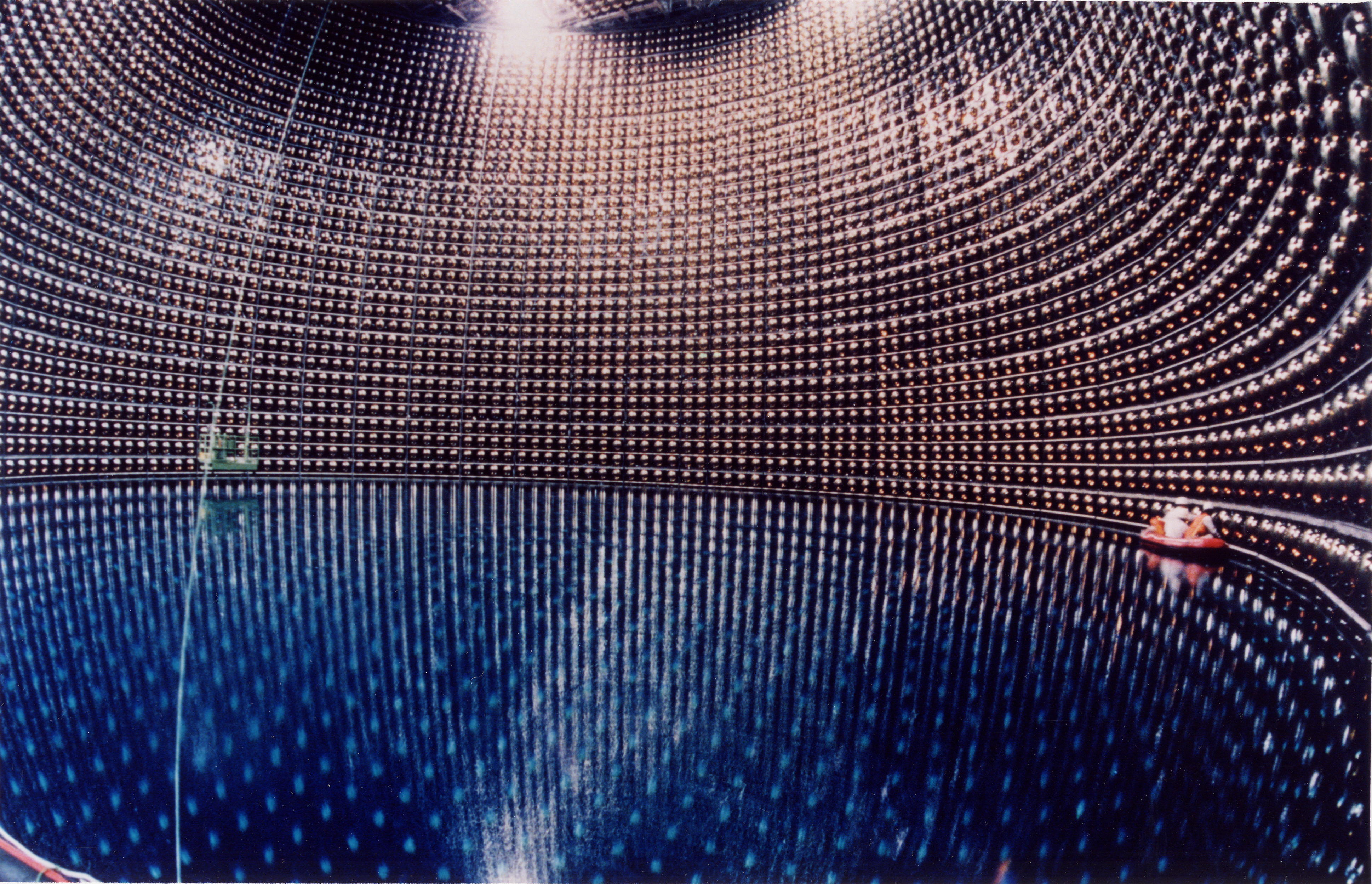My main research field at present is the T2K neutrino oscillation experiment in Japan. T2K's principal achievement has been the first observation of the conversion of muon-type neutrinos (produced from pion decay) into electron-type neutrinos, thus measuring the elusive third angle in the neutrino mixing matrix, θ13. This could potentially lead to the observation of CP violation in the lepton sector, which may in turn lead to a greater understanding of why our Universe is made of matter and not antimatter. We have also made high precision measurements of the disappearance of muon-type neutrinos (i.e. their conversion to tau-type neutrinos, which T2K cannot observe because our beam energy is not high enough to produce taus), providing additional information on the mixing angle θ23 and the squared mass difference Δm232. I am also involved in the proposed successor to T2K, Hyper-Kamiokande, due to come into operation in 2026. the t2k neutrino beam
The beam for T2K is generated using an initial high-intensity proton beam. The proton beam comes from a high-power proton accelerator in the J-PARC nuclear physics facility on Japan's east coast. The extracted protons are directed into a graphite target (designed by UK physicists at RAL), producing copious pions along with other debris. Focusing magnets select out positive pions, which are directed into a long evacuated space where they decay in flight, yielding μ+ and νμ (or—by reversing the magnetic field—negative pions for an antineutrino beam). At the end of the decay volume is a beam dump, which stops all the beam debris except the neutrinos, thereby producing a nearly pure beam of muon neutrinos. (There is some contamination from decays of other mesons, which can produce electron-type neutrinos, and occasional muon decays. The length of the decay volume is short enough that most of the produced muons do not decay, but are stopped in the beam dump.) This production mechanism yields a broad spectrum of neutrino energies. Because neutrinos have no electric charge, it is not possible to "cool" them using electromagnetic fields, as is done with, say, antiprotons. However, the energy spread of the neutrino beam can be considerably reduced by using an off-axis geometry — that is, directing the extracted proton beam and decay tunnel slightly (2.5°) off the direction of the neutrino detector. In this case, the decay kinematics restrict the possible neutrino energies considerably, so we trade off a much more monochromatic beam against a much reduced beam intensity. With a sufficiently high-intensity proton beam, this is a worthwhile exchange. A nearly monochromatic beam is highly advantageous for neutrino oscillation studies, because the relevant parameter is L/E, the distance to the far detector divided by the neutrino energy (more precisely, 1.27Δm2L/E: the squared mass difference between the two oscillating states also plays a role): therefore, the greater the energy spread, the more smeared out is the oscillation signal. The signal that T2K is designed to look for is the appearance of electron neutrinos in a muon neutrino beam. Since, as mentioned above, the initial T2K beam is not quite pure muon neutrinos, it is essential that the initial electron-neutrino content of the beam is accurately known, so that the contamination is not mistaken for a signal. This is one of the motivations for building a near detector, close enough to the origin of the beam for oscillation effects to be neglected. nd280: the t2k near detector
The diagram above shows a cutaway view of ND280. The detector is divided into two halves, each optimised for a different purpose: the Pi0 Detector or P0D, as its name indicates, is designed to measure π0 production, while the Tracker is intended for tracking of muons and electrons from "quasi-elastic" events (ν n → l– p, where the neutrino converts to its equivalent charged lepton (νμ to μ– and νe to e–), and the struck neutron converts to a proton to conserve charge, but no other particles are produced). This measurement yields the muon-neutrino energy spectrum and the amount of electron-neutrino contamination. The location at 280 m is not ideal for beam contamination measurements — it is too close to the target station, meaning that the range of neutrino angles that it sees is significantly different from Super-Kamiokande — but is constrained by the need to fit it on to the J-PARC site. It is well suited to neutrino cross-section measurements, because of the large flux. The UK contribution to ND280 includes:
super-kamiokande: the t2k far detectorThe far detector for T2K is the famous Super-Kamiokande water Cherenkov neutrino telescope. Super-K detects neutrinos by observing the Cherenkov radiation given off by particles travelling faster than the speed of light in water (the particles are, of course, not travelling faster than the speed of light in a vacuum — relativity is not being violated here). The particles detected are electrons or muons produced when a neutrino undergoes a charged current (W exchange) interaction, or electrons accelerated by elastic scattering (ν e → ν e), which can be either charged current (for electron neutrinos only) or neutral current (Z exchange; for any type of neutrino). Super-K is located in the west of Japan, 295 km from J-PARC. The energy of the J-PARC neutrino beam is tuned so that this baseline is closely matched to the oscillation length for the atmospheric oscillation θ23 and the "third angle" θ13. Note that because the squared mass difference between mass states 1 and 2 is much less than that between states 2 and 3, optimising the baseline for measuring θ13 automatically optimises it for θ23 (but not for θ12).
Super-K can distinguish between electrons and muons by the appearance of the Cherenkov ring they produce. Muons make a single "clean" ring, whereas electrons produce an electromagnetic shower of photons, electrons and positrons. As well as the primary electron, many of the produced e± themselves generate Cherenkov light. Since all the particles are moving more-or-less parallel to each other, the result is a "fuzzy" ring made of multiple overlapping rings from the shower particles. As photons with energies above 2 me also produce an electromagnetic shower, the Cherenkov signature of a high-energy photon is essentially identical to an electron. This is why π0s, which decay into two photons, are a potential background to the electron signal in Super-K. t2k physics at SheffieldThe Sheffield group has two main physics interests in T2K:
My work focuses more on understanding neutrino-nucleus interactions. The basic problem is that nuclei are complicated objects! In the early days of neutrino physics we studied the interaction of neutrinos with protons (hydrogen nuclei, in bubble chambers filled with liquid hydrogen) and with neutrons (using deuterium, which is a very weakly bound nucleus and can therefore be treated, to a good approximation, as a proton and a neutron flying in close formation). We thought that more complicated nuclei, such as the carbon in the plastic scintillator of ND280 or the oxygen in the water of Super-K, could be described by adding together Z protons and A – Z neutrons. This turns out to be much too simplistic a picture:
Such effects may lead to the observed final state being different from the produced state (with a pion of a different charge, or with no pion at all), and this in turn can lead to a wrong event count (if the event is accepted into the analysis sample when it should have been rejected, or vice versa) or a misreconstructed event (if we interpret an event as quasi-elastic scattering, νμ + n → μ– + p, and hence use two-body kinematics to reconstruct the neutrino energy from the observed muon energy, we will get the wrong answer if the original reaction actually included a pion which was subsequently reabsorbed in the nucleus, or a soft nucleon from a 2p2h interaction which did not escape from the nucleus or was of too low an energy to be reconstructed). To deal with these problems, several more sophisticated models of neutrino-nucleus interactions have been developed in recent years. The most widely used is probably the Nieves model, though other models are available. Like all models, these need to be tuned to available data. My past student Callum Wilkinson (now at Bern) and my current student Patrick Stowell have played a leading role in this work. Patrick is the lead developer of the NUISANCE package, which aims to provide both theorists and experimentalists with a common public platform supporting upload of data/new models, comparison of model(s) to data sample(s), parameter tuning and so on. The principles of the NUISANCE platform are described in this paper (published in JINST).
For more information about T2K physics at Sheffield please see the group web pages.
|
| © 2008 S.L. Cartwright |

